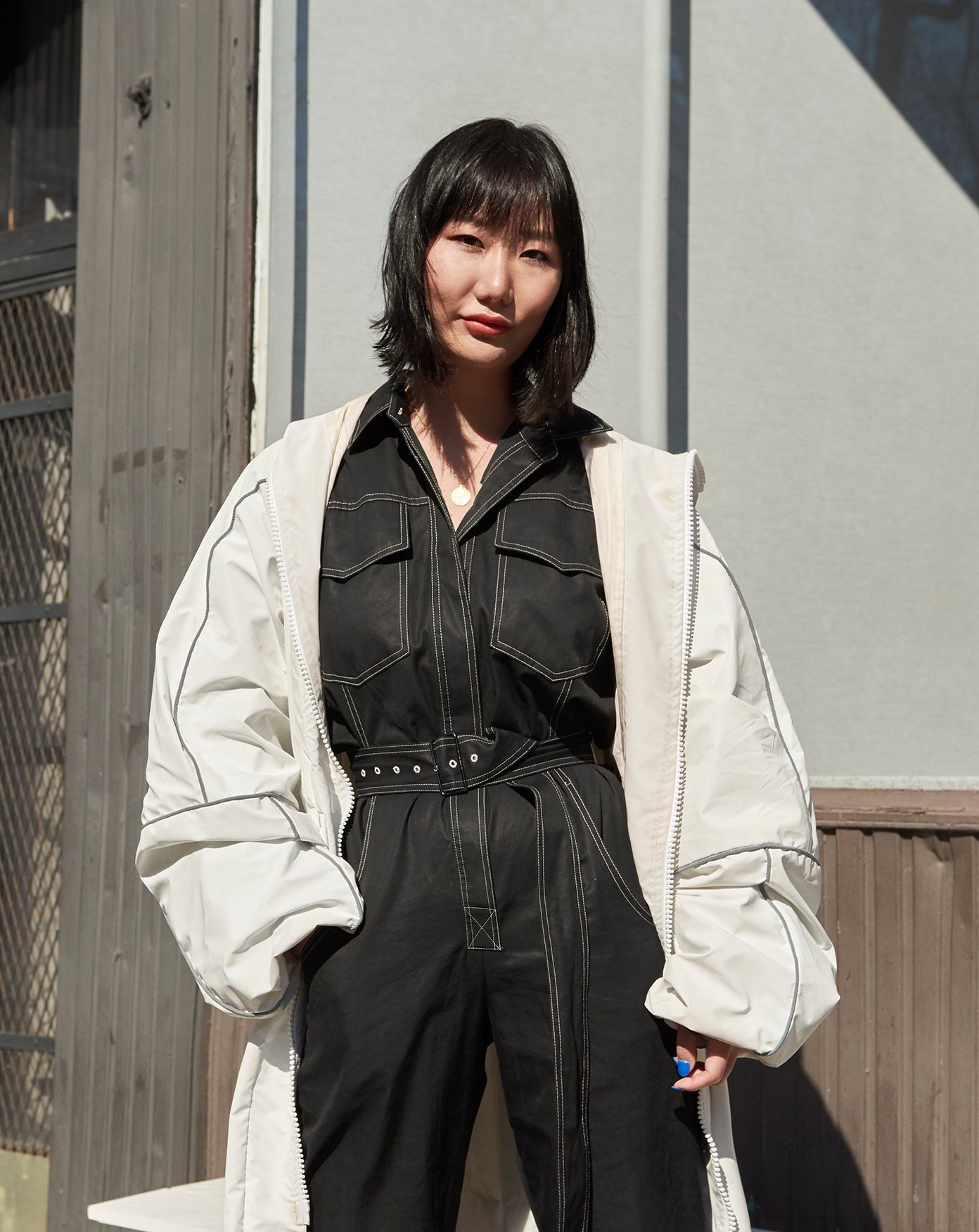Born in Korea and raised in Oklahoma, designer Ji Won Choi’s aesthetic has always represented a harmony between two very distinct cultures. Graduating from Parsons School of Design in 2017, Choi’s thesis collection, EXCESSIVISM, highlighted her signature usage of graphic lines and contrast that reminded the designer of the architecture and graphic paintings found in Korean temples. A past CFDA Fashion Future Graduate Showcase participant, Choi has gone on to accomplish several feats, among them a collaboration with Adidas Originals at London Fashion Week. Most recently, she joined 11 other designers in Amazon’s Making the Cut series. In honor of Asian American Pacific Heritage Month, we caught up with Ji Won Choi to discuss how she stays true to her dual heritage as a designer and the importance of togetherness and inclusivity in the fashion industry.
Ji, tell us more about yourself.
I’m a Korean-American fashion designer based in New York. My brand JI WON CHOI focuses on celebrating and connecting cultures by reinterpreting traditional heritages into a modern design language.
Does your family have any traditions that are especially important to you?
My family used to have so many cultural traditions when I was younger: Every lunar New Year, we would all dress up in traditional clothing, make dumplings, prepare so much food for ancestral rites, go to the temple, and perform bows for the elders. We don’t do any of that anymore, but we still make the dumplings!!
How has your heritage shaped the person you are today?
My heritage has taught me to be open-minded and to understand different perspectives. It has taught me that the differences between cultures are something to be celebrated rather than something to be watered down and made the same. It really has shaped me to be an individualistic person, who is proud of having a heritage that is so rich in culture and tradition.
How do you incorporate/stay true to your heritage while modernizing and making your heritage your own in the work you do?
The most important thing when working with my heritage – or any heritages – is giving it the proper respect that it deserves and making sure that I’m not taking away, but adding to the culture. I’m inspired by materials, traditional techniques, crafts, architecture, and any of these elements can be reinterpreted into modern silhouettes that would be more relevant to a consumer today. Oftentimes, the traditional fashion that I incorporate are now specifically reserved for special occasions, but I am reinterpreting and modernizing so that it becomes more incorporated into everyday wear.
https://www.instagram.com/p/BuEi2mKAVn8/
How do you translate your heritage to consumers?
What do you hope consumers take away from it? I translate my heritage to consumers as something that is young, cool, and fresh– something that doesn’t have to be reserved for only lunar New Year, but can be worn day-to-day. I hope that people see that our heritage doesn’t have to hide and only come out during special occasions, but is something that can be expressed in modern, fresh ways and can be worn to dinners, festivals, work, vacations, etc. I also hope that consumers understand that the differences between all the cultures around the world is something that is truly extraordinary and to be celebrated, and it brings us one step towards being more interconnected and “together.”
Has your education in fashion influenced or changed the way you reflect your heritage in your designs?
Parsons has definitely shaped the entire way that I design. Being taught that fashion design is about problem solving and that everything has to have a purpose and meaning was crucial for me. Understanding this, I had to ask myself what was most important for me to address through my work. It took a couple of collections for me to get here, but the core of my heritage and connecting different cultures was always there. It’s what I understand and live every day, and most passionate about highlighting. I’m a big admirer of your work and the unique look of how you like to include stripes.
Can you tell me more about how the use of stripes in your work represents your love for architecture and your Korean heritage?
The usage of graphic lines and contrasts have been my visual identity since my debut collection, EXCESSIVISM. I gravitate towards their boldness, and how they are reminiscent of lines in architecture and especially the colorful, graphic paintings in the Korean temples.
As someone who was born in South Korea and raised in Oklahoma, what are some obstacles you found with trying to fuse these two very different cultures in your designs?
When I started to design by meshing my two cultures of Korea and the USA, the designs all came very naturally. The biggest obstacle, however, was making sure that one culture wasn’t completely overpowering another. I wanted a right balance rather than a garment looking way too traditionally Korean or looking so watered down, that the inspiration of different heritages is not being seen in the garment at all.
Do you think the fashion industry is changing in regards to inclusivity? Where can we continue to do better?
The fashion industry is definitely progressing in regards to inclusivity, but of course there is always work to be done. I would love to see the industry put more value and effort into working directly with more widely unknown heritages that are so rich in textiles, crafts, and techniques that are slowly being replaced by more “modern” culture.

